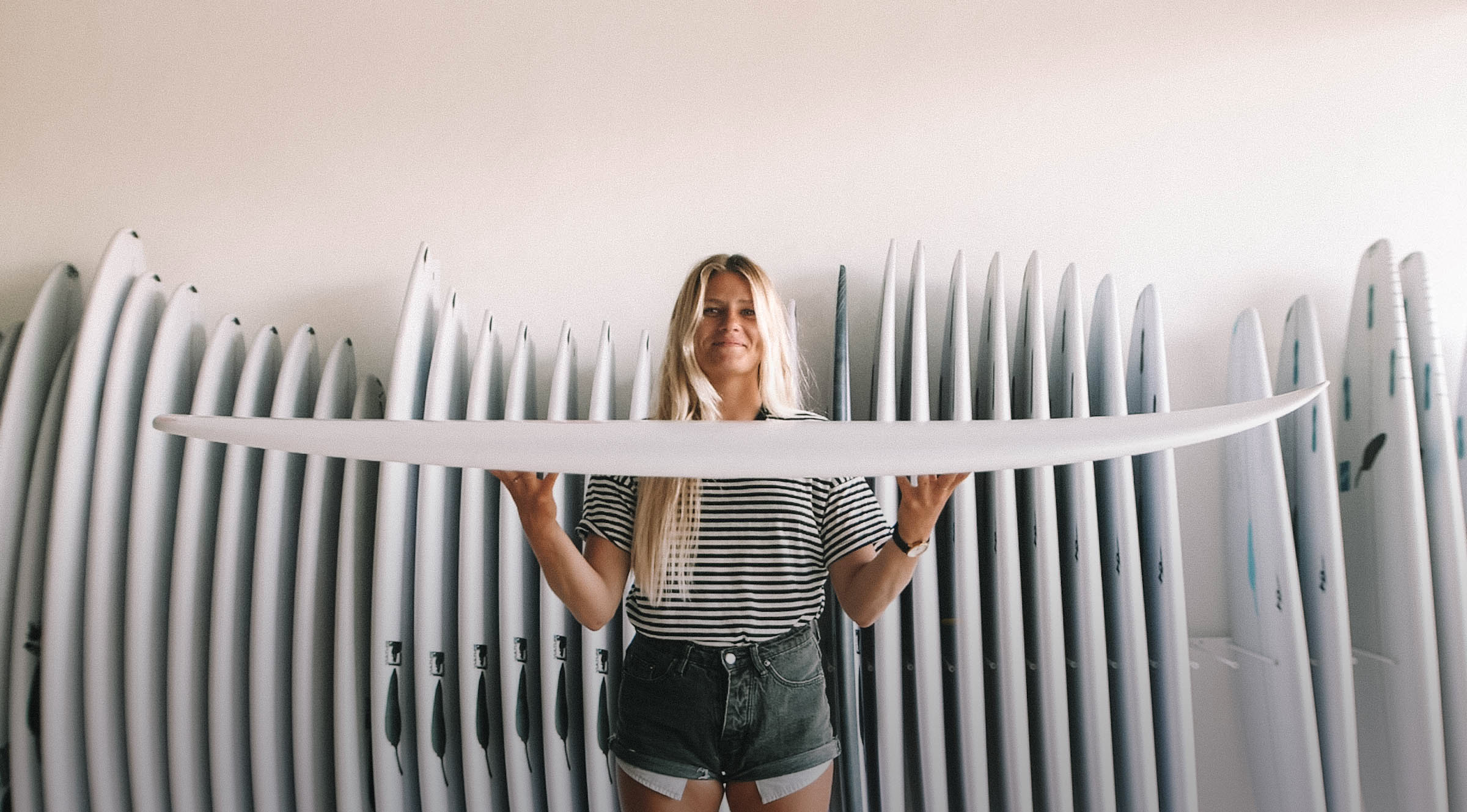

#1 - copy
Online surf coaching for beginners & intermediates
#1 - copy

Online surf coaching for beginners & intermediates
Surfboard shapers design different shapes of bottom contours for various types of surfers and different surfing conditions. Surfboards usually have different bottom contours from nose to tail. For example, a board could have a “single concave” on the nose, a “flat” bottom in the middle and a “belly” at the tail. This depends on how the shaper wants the water the be channelled under the board.
The bottom has a direct impact on your surfboard’s performance, providing different levels of control, speed and manoeuvrability. Here are the 3 most popular categories of surfboard bottom contours, their strengths, weaknesses and ideal conditions:
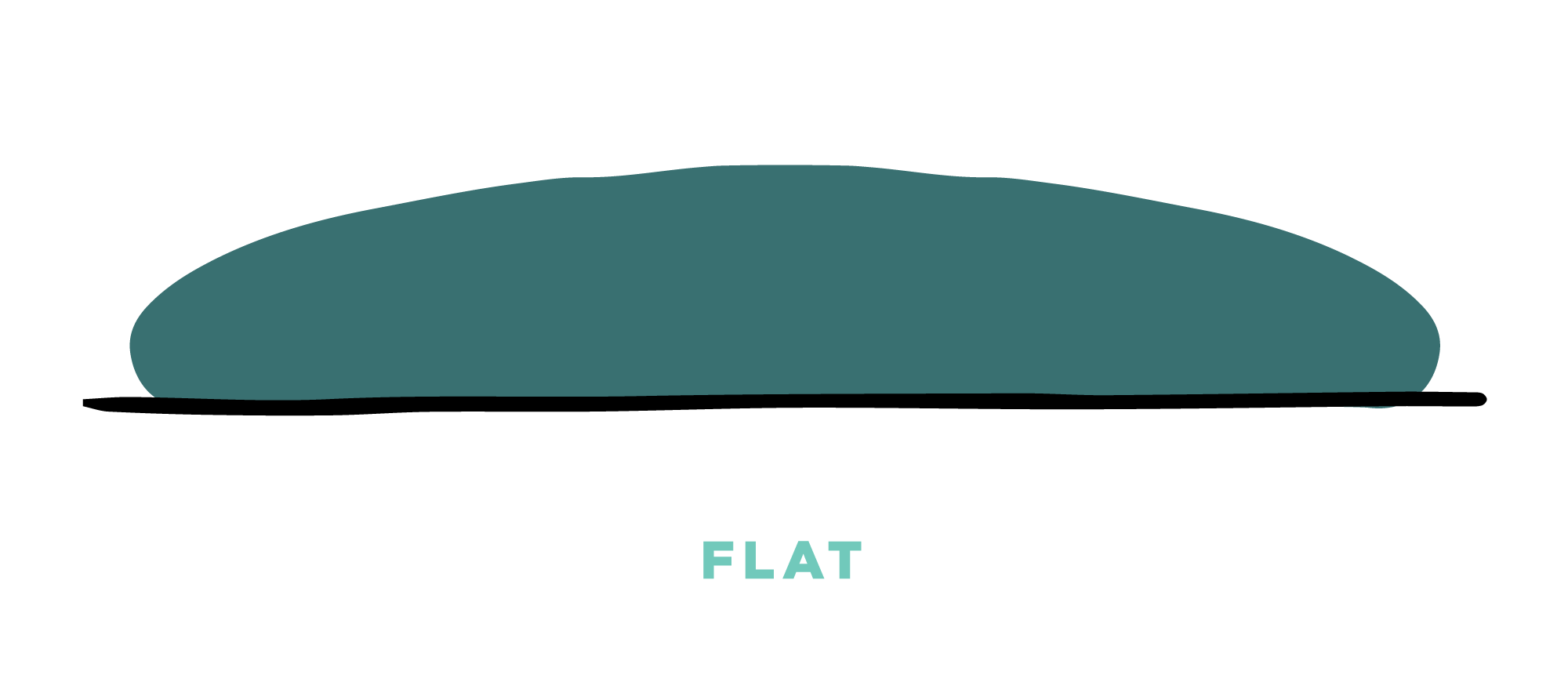 Flat Bottom
Flat BottomFlat parts of a surfboard’s bottom are great for planing on the surface. This makes it a good bottom for beginners, because they can surf further down the shoulder without losing too much speed. Advanced surfers will find that too much flat area makes it hard to stay in control in powerful waves. It’s easier to lose control and slide off when the water flow isn’t contained between the rails. Flat sections can be a good thing on small wave boards, providing speed potential in weaker waves.
Ideal Conditions: Can help you surf small, weak and mushy conditions.

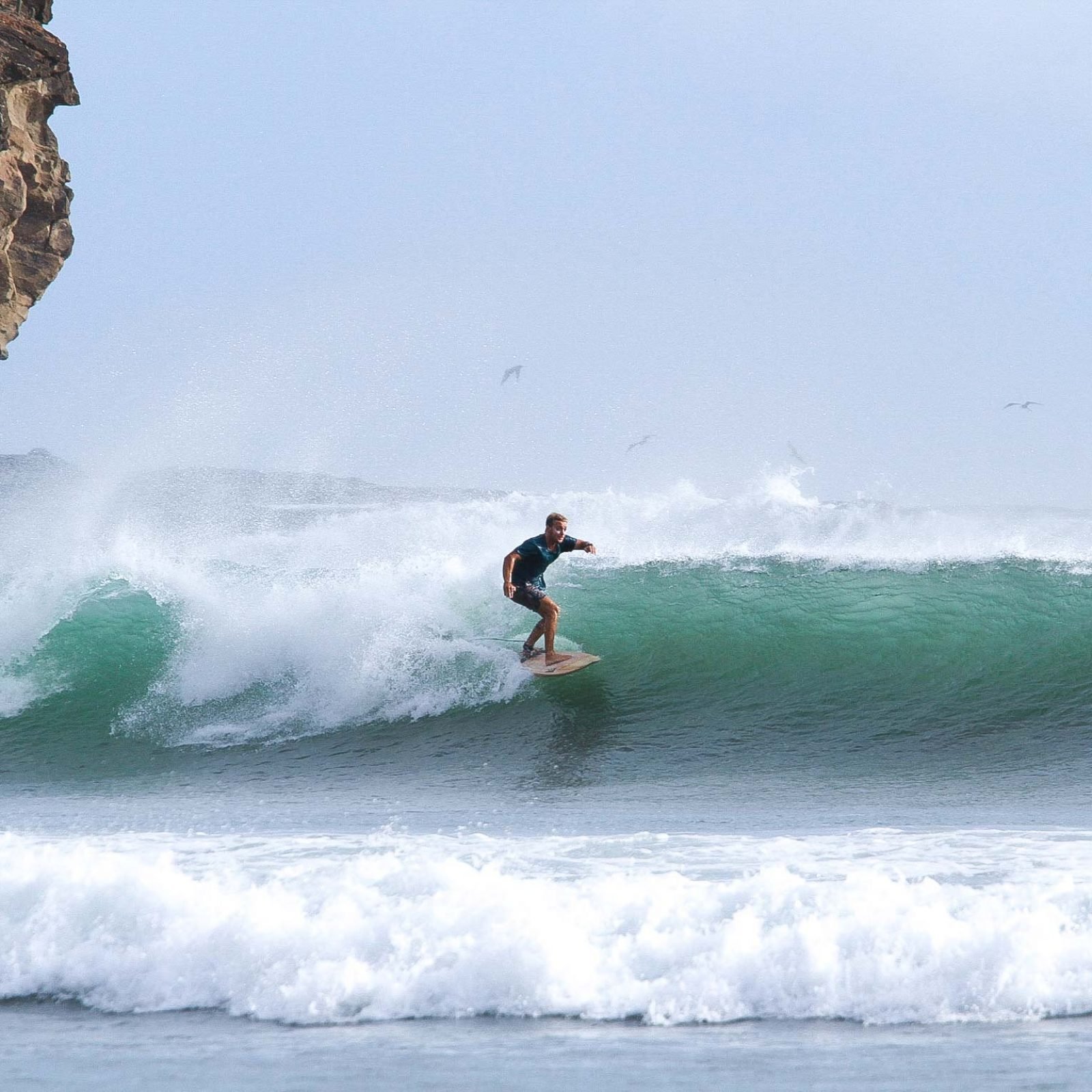
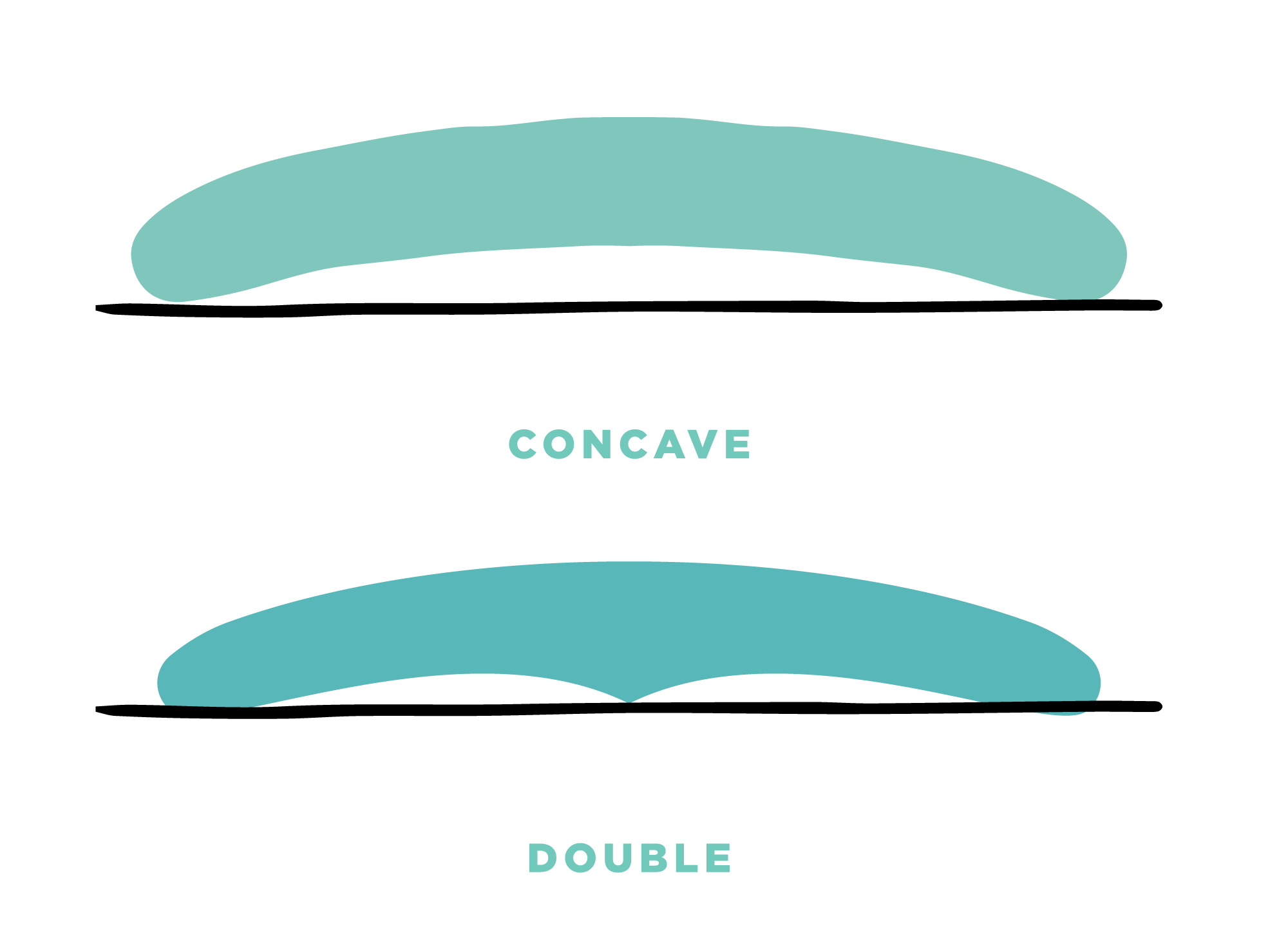
Concaves are optimal for surfers looking for speed and performance in good surfing conditions. Most shortboards will have a certain type of concave bottom contour, because it is the best shape to channel the water between the rails. Containing the water under the surfboard, instead of releasing it from the edges, creates lift and reduces drag between your board and the water. In addition to providing speed, concaves make your rails “stickier”, which helps when you want to bury the rail during a bottom turn or a huge carve on the shoulder.
Ideal Conditions: Great for clean, good conditions.

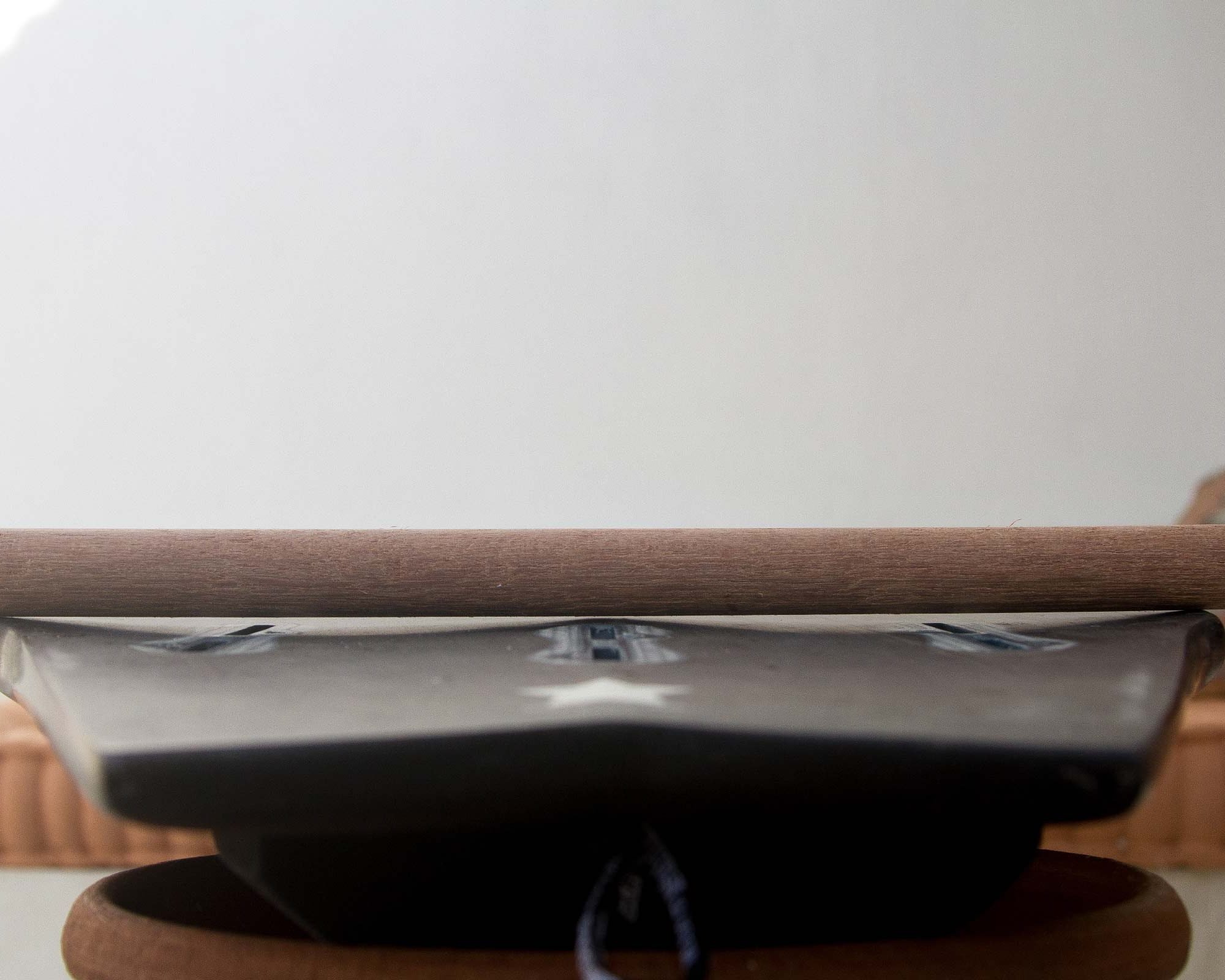
 Convexes
ConvexesConvex bottom contours, like the “vee” or the “belly”, are designed to help rail to rail transition. They act as a pivot point in the middle, providing extra responsiveness to initiate turns. This shape will slow you down, as the water flow is directed outside the rails.
Ideal Conditions: Better for fast waves on which you don’t need to generate speed by yourself.
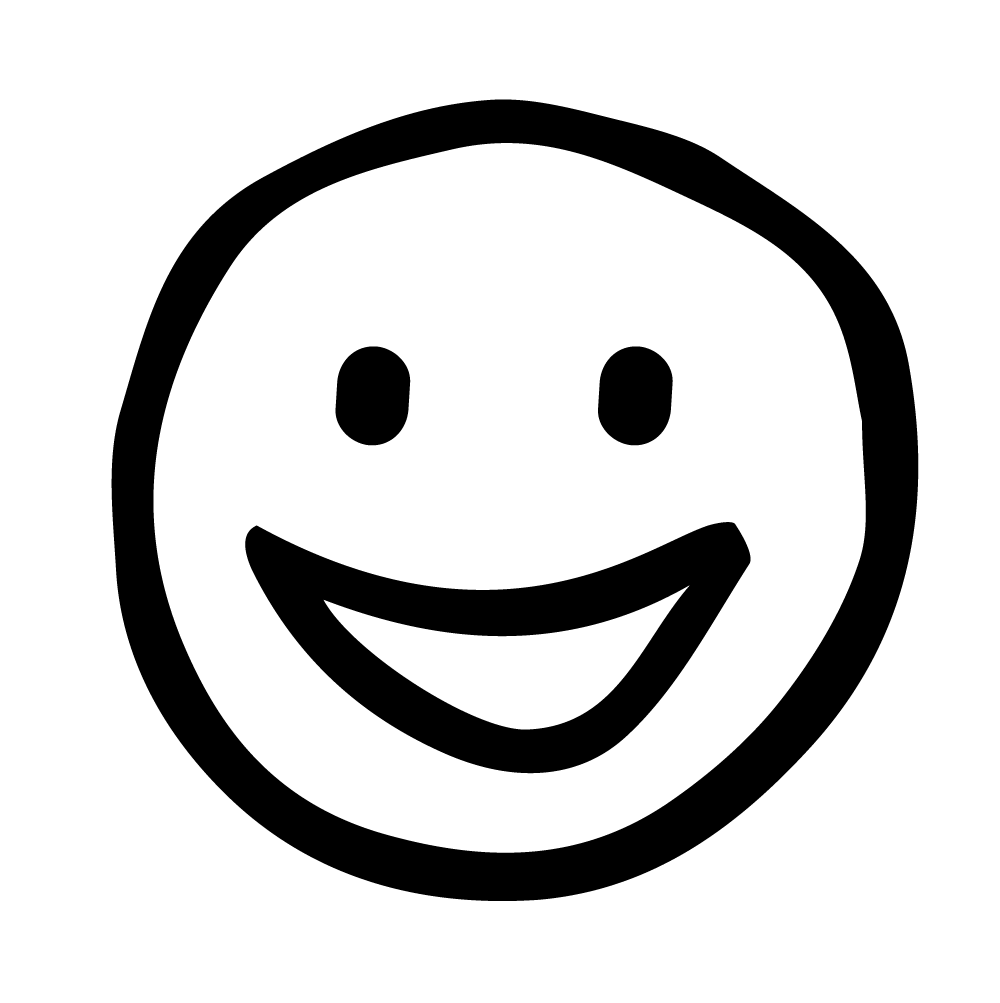 Strengths:
Strengths: Smoother ride, easy to control and to go from rail to rail. Acts as a “pivot point” from rail to rail, making the board very responsive.
7-day surf coaching retreats
7-day surf coaching retreats
10-day surf coaching retreats
10-day surf coaching, intermediates only
10-day surf coaching, intermediates only
Surf better, faster
Get news about our latest Tutorials
& Surf Coaching Retreats
Leave a comment